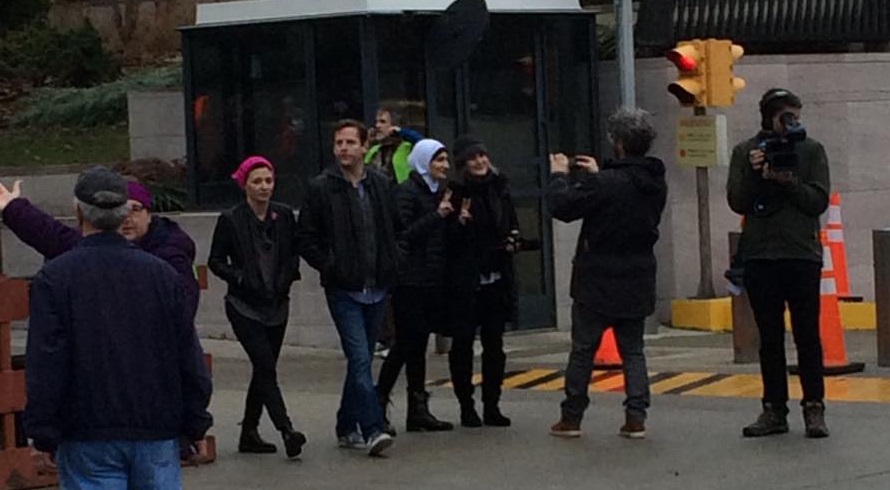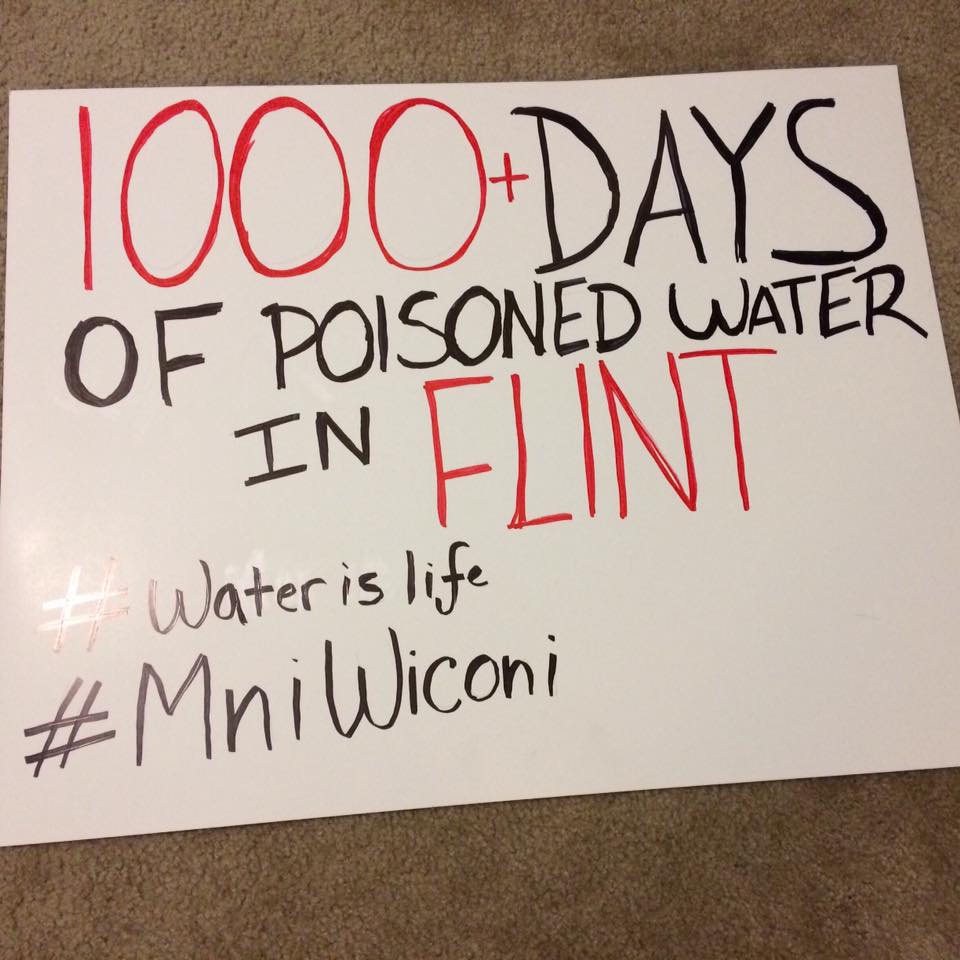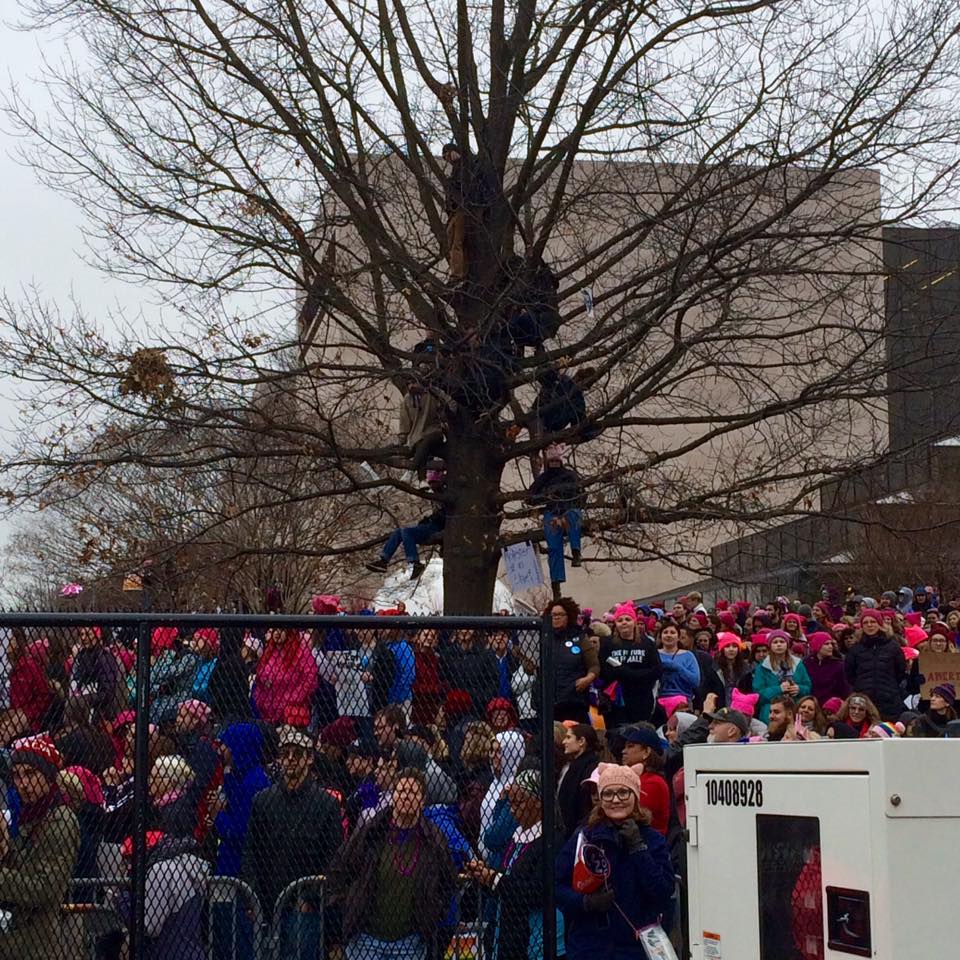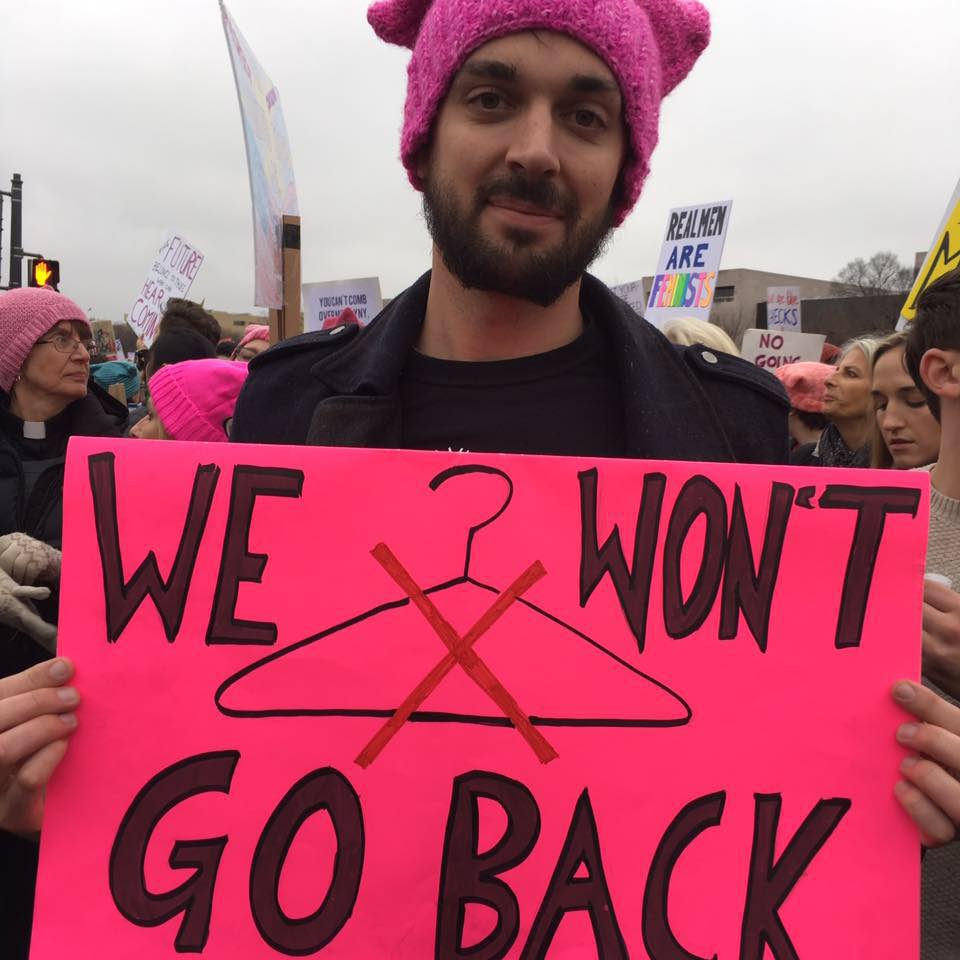Six years ago today, I was in Washington, D.C., for the Women’s March.
As soon as I heard it was on, I planned to attend. I requested the time off work and started brainstorming what to write on my poster.
Many were shocked by the outcome of the 2016 presidential campaign. I can’t pretend I wasn’t surprised. But shocked? No. Back in Flint and Genesee County, the discontent was rife. People had enough to be angry about even before the water crisis: unemployment, low wages, underfunded schools, crime, a lack of access to healthy food—you name it.
A lot of people woke up on November 9 feeling like the world had turned upside down. But back in Flint, people had been living in the upside-down ground zero for years, if not generations.
I don’t think anyone really quite knew what to expect from the march, but the entire way from Michigan, as I played Mavis Staples and Janelle Monáe, I felt a growing energy as I found myself surrounded by an automotive fleet from across the Midwest—you could spot license plates everywhere from Wisconsin, Minnesota, Ohio, and Michigan.
I left Michigan feeling like this was something I had to do. The more I drove, the more I felt like, this is something I get to be a part of—an historic moment that I’ll never forget and can recount to my grandchildren.
I met up with a childhood friend, Elizabeth, and a friend of hers. The morning of the protest, we stopped for coffee. The line was long and snaked tightly around the interior of a Starbucks attached to a hotel lobby. At one point, a man with a MAGA hat wandered in. Standing a foot taller than anyone else in the room, he surveyed the pink pussy hats, turned around, and left.
Coffee in hand, we got as near the event stage as we could. We were a little early, and reasonably close to the stage. Elizabeth came back from the porta-johns and I took my turn. I remember seeing Amy Goodman, the host of Democracy Now, interviewing one of the organizers, Linda Sarsour. I took their picture and hurried on.

I hadn’t been gone for more than five or 10 minutes, but as I tried to make my way back, I found the crowd had swelled beyond belief. I couldn’t get anywhere near where I had left Elizabeth. I tried texting her and a few other people I knew would be at the march, but my phone wasn’t working. There were too many people all in the same place and I couldn’t get any reception.
What to do? I had made a poster for the march to represent the ongoing water crisis in Flint, but I had left it behind with Elizabeth. I felt a little naked without it.

For some reason, a mother and daughter spotted me and must have thought I looked a little adrift. They handed me a poster they had made that said, “We won’t go back.” I’ve kept the poster, and it hangs in my bedroom still today.
I don’t remember much about what any of the speakers said at the march. A few snippets persist in my memory. Ashley Judd making an awkward entrance with a drawn-out proclamation of being “a nasty woman.” Flint’s own Melissa Mays. The antsy feeling in the crowd as Alicia Keys took the stage while attendees pined to stretch our legs, march, and do some good ol’ chanting.

Eventually, we did march.
It was a disorganized, but passionate—and beautiful.
Unable to see or hear much of what was happening on the main stage, people grew weary. We decided that we wanted to do more than clap every time someone new came out to the stage.
The crowd began to let loose in trickles. People dispersed in pockets to march around the city. There was such a tremendous feeling of togetherness.

The only time I have ever experienced anything like the Women’s March was in Buenos Aires after Argentina won the World Cup in 2022. There was a deep magic in both moments, where so many people came together and dropped their differences, agendas, and egos at the door.
Although we were uncomfortably crowded and growing tired as the day went on, people were in good humor and tried their best to help each other.
An elderly straight couple near me beseeched others in the crowd to help them find their way out of the crowd. That moment, I think, is what sparked the bigger idea in many of the protestors to follow suit and start marching out of the event venue and take the protest to the streets.
I don’t remember how long or where I marched. I do remember seeing a group of middle school students from Michigan’s Keweenaw Peninsula who doubtless had been there for the inauguration the day before and were looking rather shocked at the protests.
As the crowds began to disperse, I eventually got use of my phone back and Elizabeth and I found each other again. I don’t remember a thing that happened later that evening. If I remember correctly, we grabbed a coffee as the crowds were starting to disperse; chants and marchers still surrounded us.
The energy was indescribable, and it propelled us forward in the months that followed. Once people see the power they hold, you can’t easily contain it.
That evening, we watched the reports of crowds across the United States—and across the world—with awe and humility at the magnitude of the moment. We had to return back to our normal lives again that following Monday, but we knew that “normal” would never quite be the same again.



